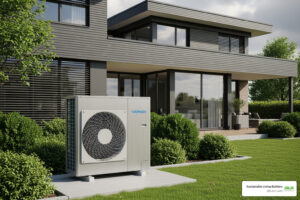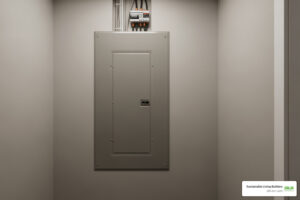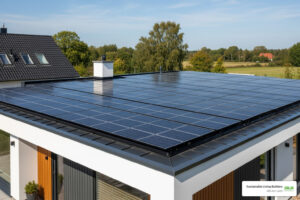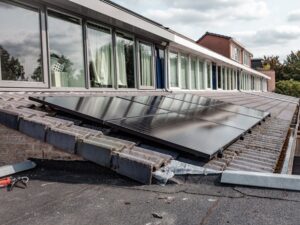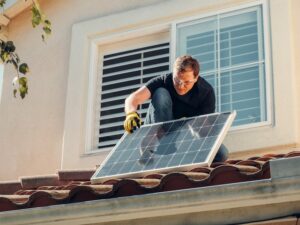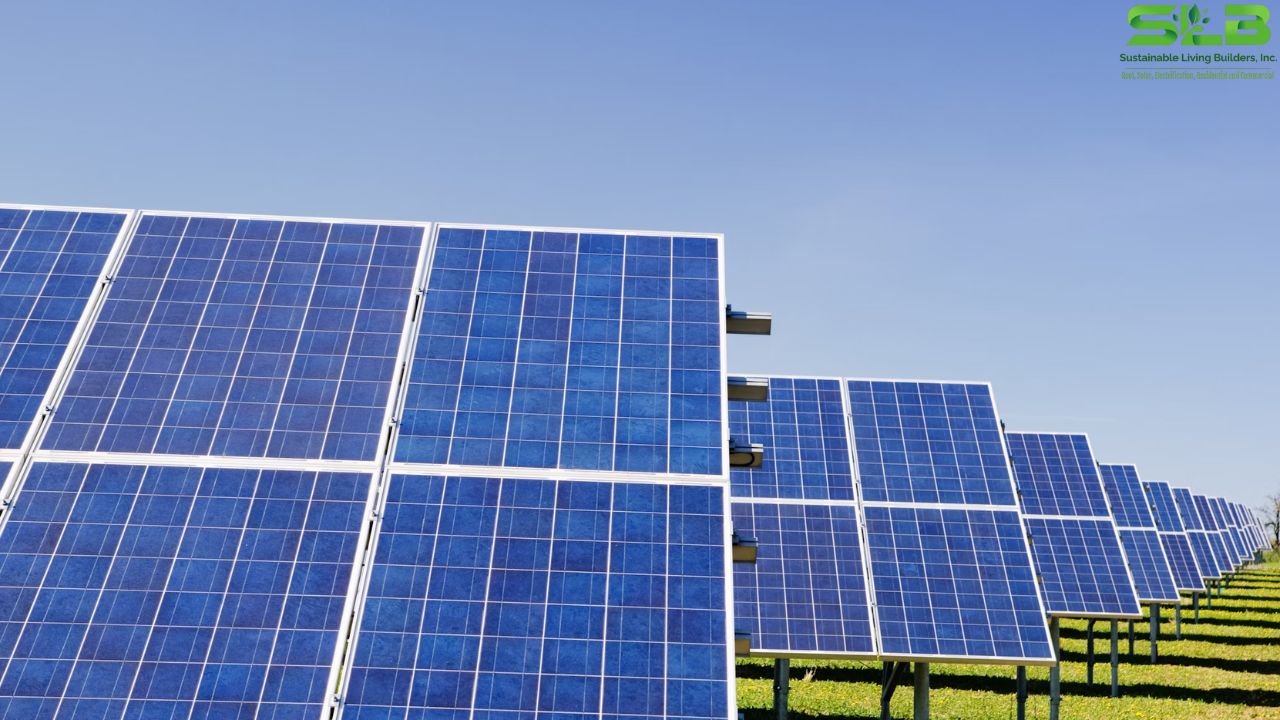
How Many Solar Panels Do I Need Support 4,000 kWh Per Month?
Solar panels are a revolutionary innovation that are widely used across the world today. The number of solar panels you need depends on the free area that you have on your roof or land (ground mounts).
To meet a 4,000 kWh per month energy need, you would require approximately 87 solar panels. This calculation assumes you are using 350W panels and that you receive around 5 hours of sunlight per day. Each panel would generate roughly 1.75 kWh per day, and factoring in energy losses (10-15%), the total number of panels adjusts accordingly.
Keep in mind that this number can vary depending on your location’s sunlight exposure, the type of panel efficiency, and your roof’s available space. Using higher-efficiency panels or living in sunnier areas could reduce the total number needed.

What is 4,000 kWh?
The unit kWh stands for kilowatt-hours, which measures how much energy you use. For example, using a 1,000-watt air conditioner for one hour uses 1 kWh. If your monthly energy usage is 4,000 kWh, this means you are using 4,000 kilowatt-hours of electricity every month.
How Much Energy Does One Solar Panel Produce?
The amount of energy a solar panel produces depends on its size and efficiency. Most residential solar panels today produce between 250 watts and 400 watts per panel, which is generally enough for home usage.
For example, let’s assume you are using 350-watt solar panels. On a sunny day, a 350W panel can produce about 1.75 kWh per day (350W × 5 hours of sunlight = 1.75 kWh).
Step-by-Step Calculation
Now, let’s calculate how many panels you need to produce 4,000 kWh per month.
- Calculate your daily energy need:
- 4,000 kWh per month ÷ 30 days = 133.33 kWh per day.
- Calculate the energy output of one solar panel:
- A 350W panel produces about 1.75 kWh per day.
- Calculate how many panels you need:
- 133.33 kWh per day ÷ 1.75 kWh per panel per day = 76.1 panels.
So, you would need to install about 76 panels of 350W to produce 4,000 kWh per month.
Factoring in Losses
Solar systems don’t always work at 100% efficiency. They can lose about 10% to 15% of energy due to wiring, shading, or weather conditions. Let’s add a 12% loss factor.
- Adjust your energy need: 133.33 kWh per day/0.88 (to account for 12% losses) = 151.52 kWh per day.
- Recalculate the number of panels needed: 151.52 kWh per day/1.75 kWh per panel per day = 86.6 panels.
After considering system losses, you would need about 87 panels to meet your 4,000 kWh per month goal.
Other Factors to Consider
While the calculations above are a good starting point, there are other factors that can affect the number of panels you need.
1. Sunlight Hours
The amount of sunlight you get depends on your location. Some places, like Arizona or California, get more sunlight, which means your solar panels will produce more energy. In areas with less sunlight, like Washington or Oregon, your panels will produce less.
- Southern States: Receive more sunlight and may need fewer panels if you live in one of these states.
- Northern States: Receive less sunlight, so you may need more panels if you live in one of these states.
2. Roof Space
The size of your roof will also determine how many panels you can fit. If your roof is small, you may need higher-efficiency panels to produce enough energy in the available space.
3. Panel Efficiency
Not all solar panels are the same. Higher-efficiency panels can produce more energy in less space. For example, a 400W panel will generate more energy than a 350W panel.
Choosing the Right Solar Panels
Choosing the right type of solar panel is important for getting the most out of your system. Here are the main types of panels to consider:
1. Monocrystalline Solar Panels
These panels are made from a single piece of silicon and are more efficient than other types. They produce more electricity per square foot, making them a good choice if you have limited roof space.
2. Polycrystalline Solar Panels
These panels are made from melted silicon and tend to be less efficient than monocrystalline panels. However, they are usually cheaper and still work well for many homes.
3. Thin-Film Solar Panels
Thin-film panels are lightweight and flexible, but they are the least efficient. They are best used in areas where space is not a concern, or for larger installations.
Estimating Solar Panel Costs
The cost of installing solar panels will depend on the number of panels you need, their efficiency, and your installation costs. On average, solar panel installation costs range from $2.50 to $3.50 per watt.
For instance, for 87 panels of 350W, the approximate cost can be calculated as below:
- Cost per panel: $250 – $400.
- Total cost: $21,750 – $34,800 for the entire system.
These costs can vary based on factors such as location, installation fees, and available incentives.
By choosing the right type of solar panel and optimizing your system’s performance, you can make the switch to solar energy and reduce your reliance on traditional energy sources while saving money on electricity bills.
Always opt for a reliable roofing contractor with ample experience, such as Sustainable Living Builders, for reliable services. Opt for high-quality solar roofing services and benefit from full value for your investment for years to come.
Related Articles You May Like
✔️ What Can Companies Do More to Support Sustainability?
✔️ Everything You Need to Know About Solar Panels
✔️ Why a Solar Roof Tesla Is the Perfect Year-End Upgrade
✔️ 4 Tips for Finding the Right Contractor for Your Solar Installation
✔️ Are Solar Panels Worth It?
MULTIPLE SERVICES, EVEN MORE SUSTAINABLE SOLUTIONS!
If you’re looking for a team of experienced, hard-working, and committed team to take your home or business to a more sustainable future, Sustainable Living Builders, Inc. is here for you! From holistic roofing solutions to innovative solar options, we have many services to help you protect your home and your pocket in a single place. Are you ready to get started?
